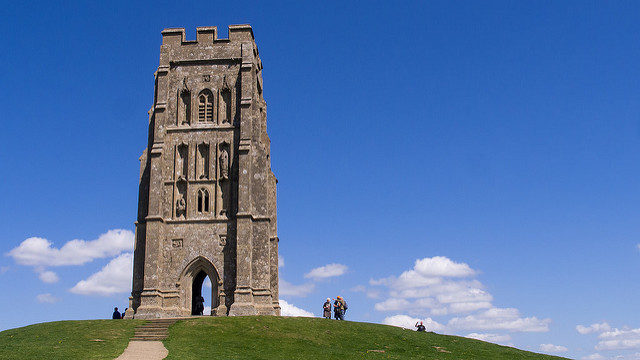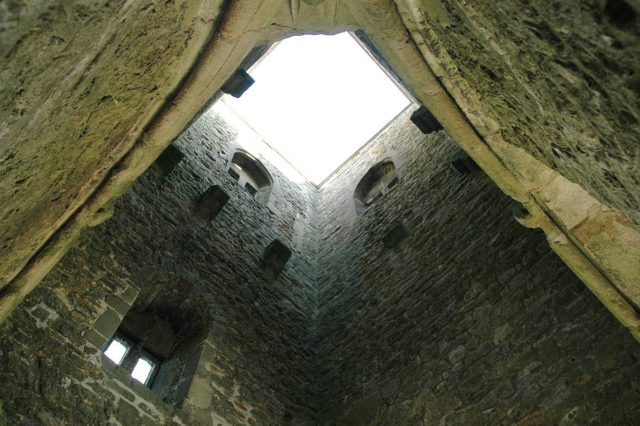
Last year I went up Glastonbury Tor, which is near the town of Glastonbury. Logic. It's supposed to be the burial place of King Arthur, but I found no evidence of this. Admittedly I didn't look very hard, but I feel my non-discoveries were conclusive. He's either not there, or he's very well hidden. Anyway, the article I've linked to gives a bit of background.

Just because Arthur isn't there doesn't mean it's not fascinating.
The sides of the Tor have seven deep, roughly symmetrical terraces. Their formation remains a mystery with many possible explanations. One explanation is that they may have been formed as a result of natural differentiation between the layers of lias stone and clay used by farmers during the Middle Ages as terraced hills to make ploughing for crops easier. Other explanations suggested construction of defensive ramparts. Iron Age hill forts including the nearby Cadbury Castle in Somerset show evidence of extensive fortification of their slopes. Another suggestion, proposed by Geoffrey Russell in 1968, is that the terraces are the remains of a three-dimensional labyrinth that guided pilgrims up the sacred hill.Its a very impressive and mysterious place.




No comments:
Post a Comment